Sales is the ultimate goal for any business – the more sales you can generate, the better your business is performing. In eCommerce, most people don’t buy products on their first visit that’s why the conversion rate is an important metric for analyzing the store performance and optimizing it for better results.
Conversion rate is the percentage of website visitors who complete an action that leads to converting visitors into leads, prospects, or customers. The actions can be anything your company finds valuable in achieving business goals.
All these actions lead to one thing that matters to any business – Sales. Some contribute directly to the goal, while others lead visitors into your conversion funnel where they can be nurtured into customers.
If you are struggling to grow your eCommerce sales or increase the conversion rate, you need to focus on conversion rate optimization. And this guide is all about that.
We created this guide to help you understand how to optimize your online store to improve the conversion rate and generate more sales. Keep reading, and by the end of the guide, you will know the effective ways to improve your conversion rate.
What is Ecommerce Conversion Rate Optimization?
Conversion Rate Optimization or CRO is the process of increasing the number of visitors and taking desired actions that lead to sales.
The desired actions for eCommerce brands can be –
- Creating account
- Completing the purchase
- Adding products to the cart
- Creating wishlist
- Email Signups
- Social media share
And your goal is to improve the number of these actions in your store – not every action, but what matters to your business or contributes to achieving your KPIs.
The objective behind conversion rate optimization for eCommerce sites is to improve the shopping experience by making changes to the website user experience so that it encourages visitors to take specific actions.
However, you must avoid making random changes and use data to find what’s affecting the conversion rate and how it can be optimized for a better conversion rate.
22 Actionable Ecommerce Conversion Rate Optimization Tactics
In this section, we will show you some of the proven tactics of eCommerce conversion rate optimization that successful eCommerce brands are using and you can too.
However, before making any changes to your website, we recommend collecting data on how users are interacting with your current website so that you will have data to compare the performance and the impact created by each change.
Further, you must run A/B tests on each element with different variations in color, size, and copy to find what works best for your customers to take action.
If you are ready, let’s get started.
1. Build an effective conversion funnel
One of the most common mistakes we have observed in eCommerce brands is that they don’t have a proper conversion funnel on the website to convert new visitors into customers or leads.
By putting an effective conversion funnel in place, you can add new visitors to the funnel and guide them toward conversion via email, SMS, or retargeting campaigns.
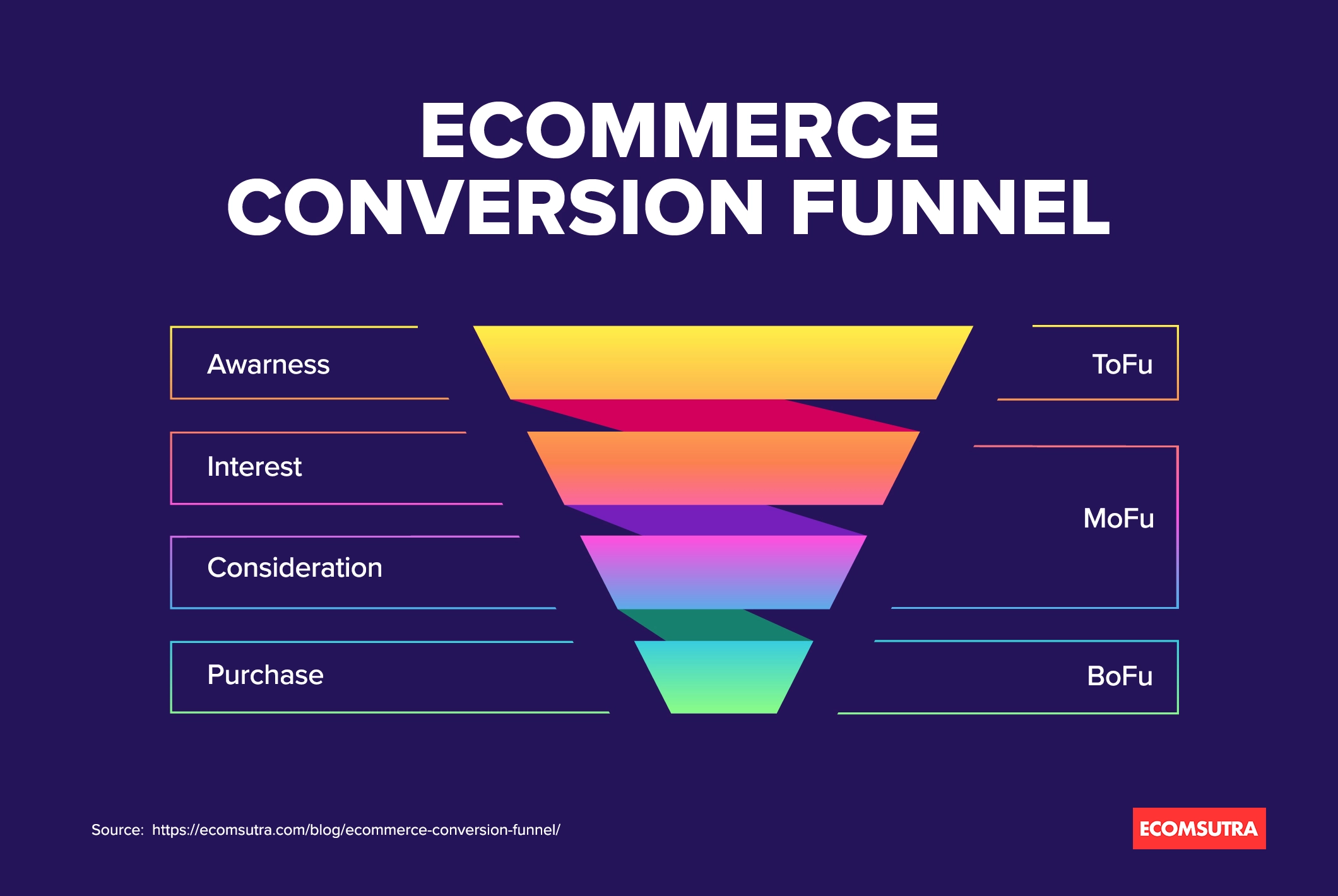
You should know that over 92% of first-time visitors will never return to your store. It means that without an effective conversion funnel for your store, you are losing many potential customers who might be interested in your products but didn’t buy right away.
- Further Reading: How to build an effective eCommerce conversion funnel
2. Use Great Product Images
Product images are critical for eCommerce business; online shoppers judge the product quality and brand value based on how effectively you can present your products via images.

In online shopping, customers can’t touch or feel your products physically. So, they rely on your product images to make the best of their assessment of how it will fit into their lifestyle. Here are a few tips that can make your product images effective –
- Add multiple shots of the product
- Present products in different use cases
- Allow customers to zoom in on the images
Finally, you should use high-quality images such that the products are appropriately presented and inspire confidence among consumers regarding their quality.
3. Add Short Product Videos
Although quality Images are the backbone of the eCommerce business, a short product video on the product page can boost your conversion rate significantly.
Over that, product descriptions are essential, but you have to accept that not everyone reads them entirely. So you need videos to communicate the product information such that your audience can understand.
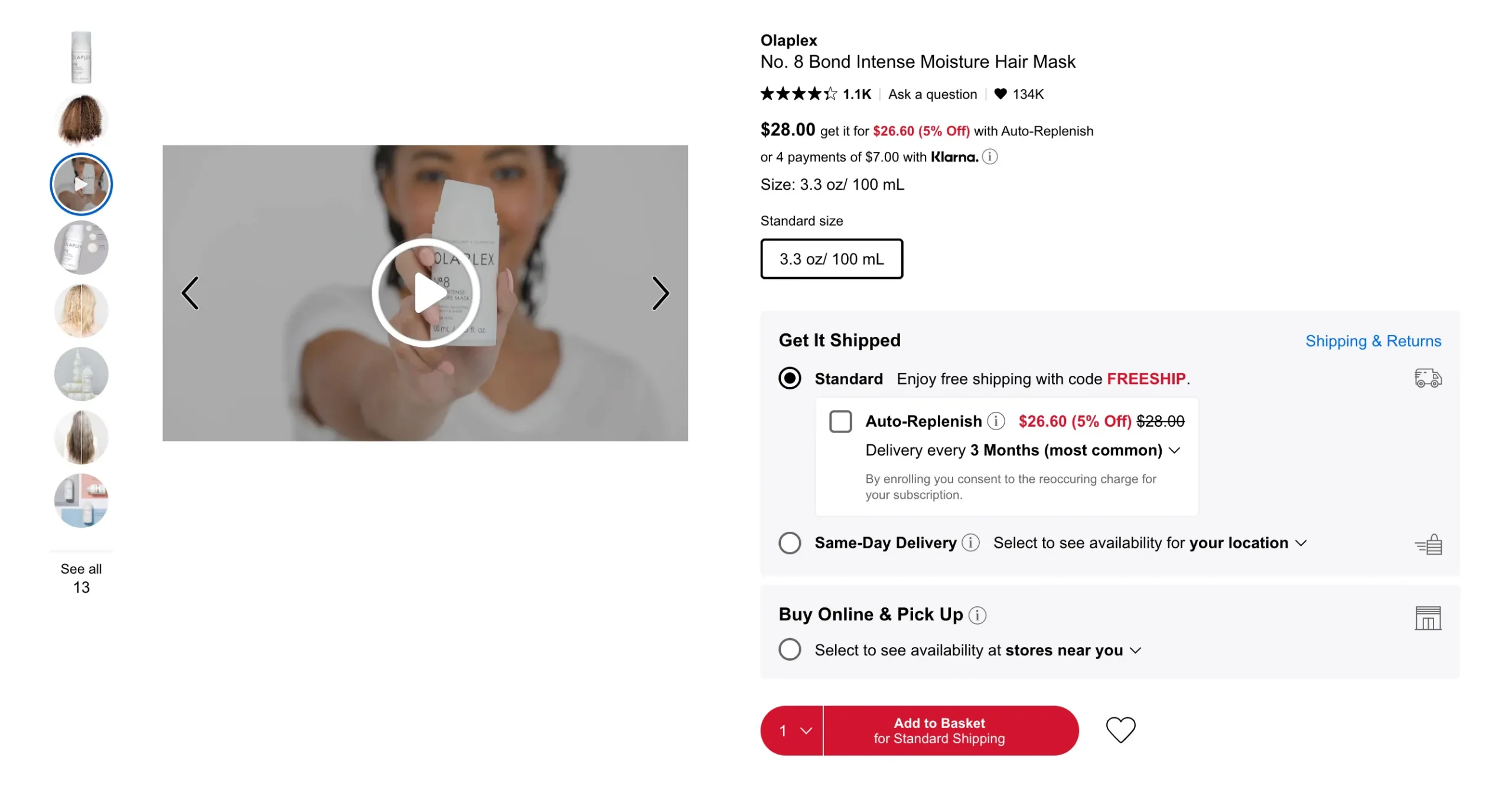
Using videos, you get the creative freedom to –
- Present the product features in the easiest way possible
- Present product demonstrations
- Educate about product usage
- Answer the most common questions for the product
Moreover, if you are leveraging influencer marketing (which you should), you can also add their tutorials and reviews on your website to show that their favorite content creators are also using and recommending your products. This way, you can establish consumers’ confidence in your products and boost the conversion rate.
4. Craft a detailed product description
A product description is where customers learn about the product – material, specifications, warranty, country of origin, and more. So, you must ensure that the product descriptions provide all the necessary information that a consumer requires to make a purchasing decision.
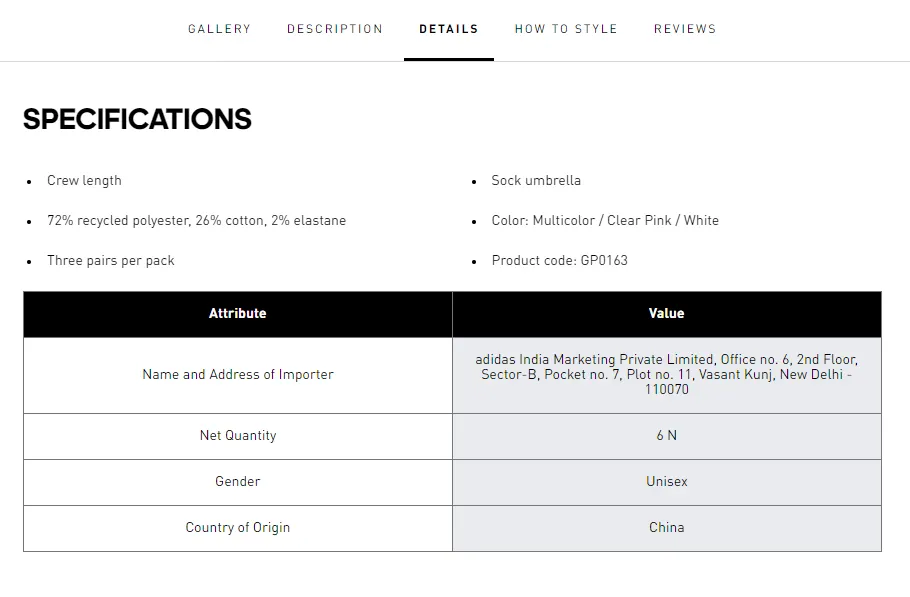
For instance, you need to provide the fabric type and washing instructions for clothes and textile products. Whereas for electronics, you may have to provide information on storage capacity, screen type, battery types, etc., that can help customers determine if it is the right product for them.
Also, rather than using statements like 3-4 days battery backup, be specific and use numbers to back your claims. In this case, a statement like 72-hour battery backup would be more impactful.
Finally, product descriptions should be created to provide product information such that it is readable and easy to understand for everyone. You can also use tables and bullet points to highlight the features of the products.
5. Add Multiple CTA Buttons
The primary objective of a CTA button is to encourage consumers to take action toward conversion. And, if you can make visitors take even a small step toward conversion, they are more likely to convert into paid customers than those who leave your site without taking action.
For instance, on product pages, you can boost conversion rate by providing multiple CTA buttons such as –
- Add to cart – Let customers add the products to their shopping cart to check out collectively.
- Buy Now- let customers buy the product directly without adding it to the shopping cart.
- Wishlist/Favorite – Let customers create wishlists of all the products they like so that they can filter them later or share them with other users.
These CTA buttons let consumers take different actions; if they don’t want to purchase the product immediately, respect that and offer them other options to buy later.
Similarly, you can try multiple CTAs on your eCommerce website’s homepage, blog posts, and other pages.
The objective of this strategy is simple – let consumers take action and get them into your conversion funnel, where they can be turned into paid customers if they aren’t already.
6. Highlight Return & Exchange Policy
When someone buys a product online, they can’t touch it or pick it themself. So, they want to ensure that if the product delivered is damaged or wrong, they have a chance to return it for a refund or exchange for its replacement.
So, a transparent and consumer-friendly return and exchange policy adds another trust factor to your online store. However, it is important to place it in the right place so users can see it.
Here’s how Flipkart displays its replacement policy on the product pages –
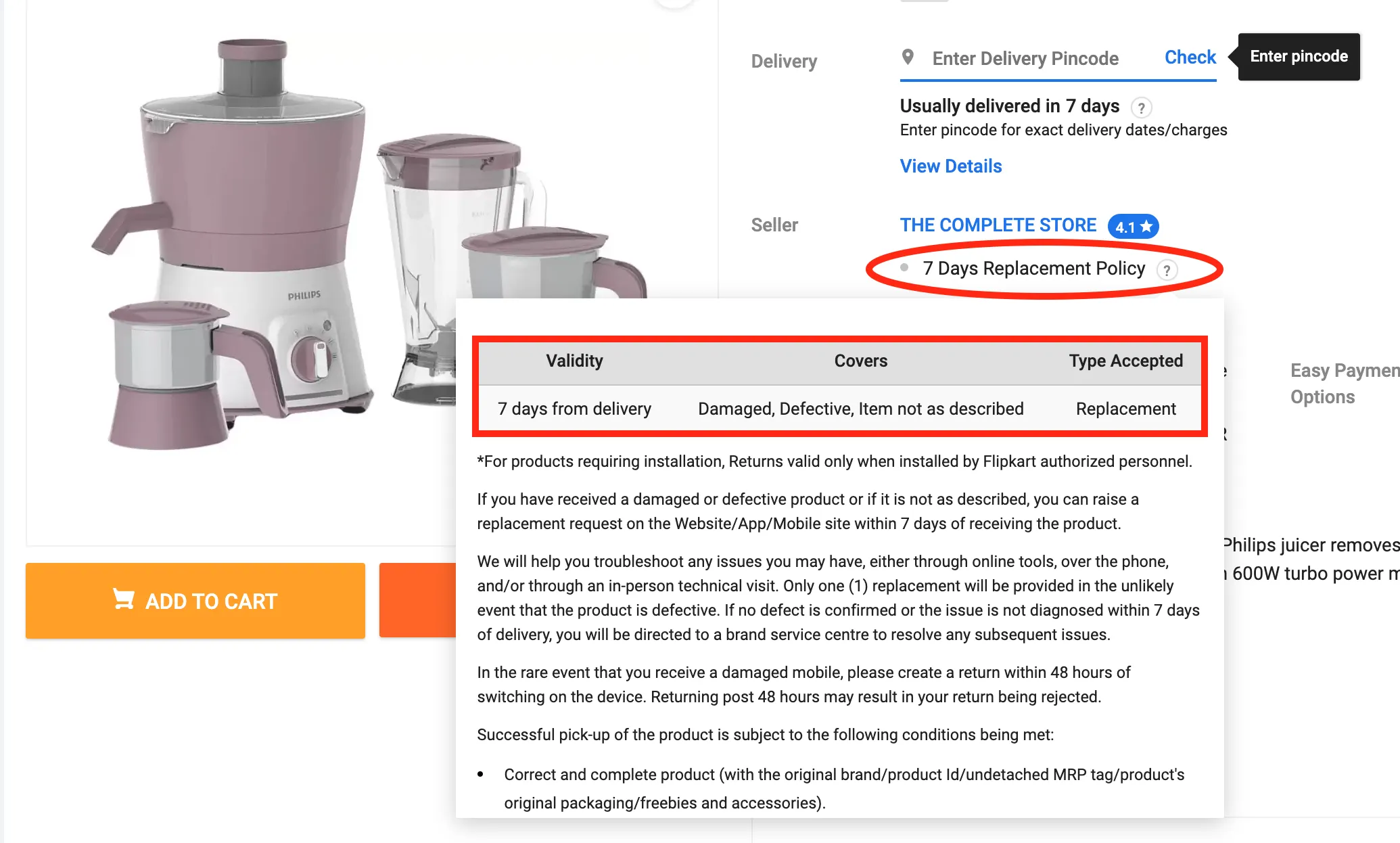
To avoid confusion among consumers, make sure you have clear terms and conditions to be eligible for the replacement or refund.
7. Display Customer Reviews & Testimonials
Customer reviews are the best social proof eCommerce brands can use to build trust and credibility with new customers.
You should know that nearly 90% of online buyers read customer reviews to make a buying decision. So, if you don’t have customer reviews displayed on the website, you are losing many potential customers.
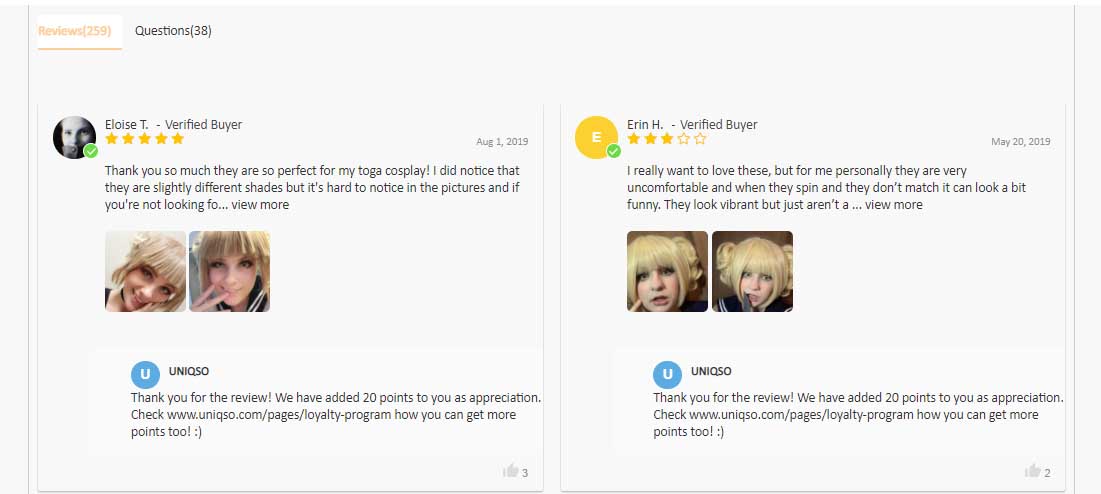
The best time to request reviews is after the customer receives the product and uses it for a few days. You can request the reviews via email or text messages.
Once you collect reviews, here are the best practices that you should follow –
- Let customers submit photo and video reviews
- Allow customers to filter and sort their reviews by ratings
- Don’t censor the negative reviews
- Display information about reviewers like age, gender, country
- Distinguish the buyer’s review from non-buyers
- Moderate spam reviews
Using review apps like Stamped.io or Loox ( for Shopify), you can automatically send review request emails to customers and incentivize them with offers and discounts. These software also provides different layouts to present reviews throughout your website pages.
8. Display Trust Badges & Certificates
Apart from using customer reviews to build trust, one of the typical trust factors you must deal with is consumer data privacy. They want to ensure that their name, email, contact number, addresses, and credit card details are secured on your website.
You can win your customers’ confidence by displaying trust badges across your website. These badges should be provided by trusted organizations in their respective fields.
Here are some of the popular ones that you might have seen on major eCommerce websites –

Over that, if you sell food products, cosmetics, or any health-related products, consumers want to know if your products are safe to use and are as per the standards set by the government and other organizations.
For this, you must display official seals and certificates that represent the authenticity of the products. You can also highlight it using the phrases like “100% organic,” “Certified of XYZ,” etc.
By displaying these trust badges and certificates across your website throughout the buying process, you can reassure your customers of their safety and encourage them to complete the purchase.
9. Display Shipping Time Estimates
In eCommerce, shipping times play a vital role in a store’s conversion rate. When a customer buys a product, they want to know when they can expect the product to be delivered.
So, instead of using phrases like “delivered in 2-3 working days”, display the exact shipping estimates. This allows customers to plan their day accordingly such that they are available to receive the product.
The best way to do so is by tracking the users’ location or asking them to enter their zip code/Pincode of delivery address, based on which you can provide an estimated delivery date.
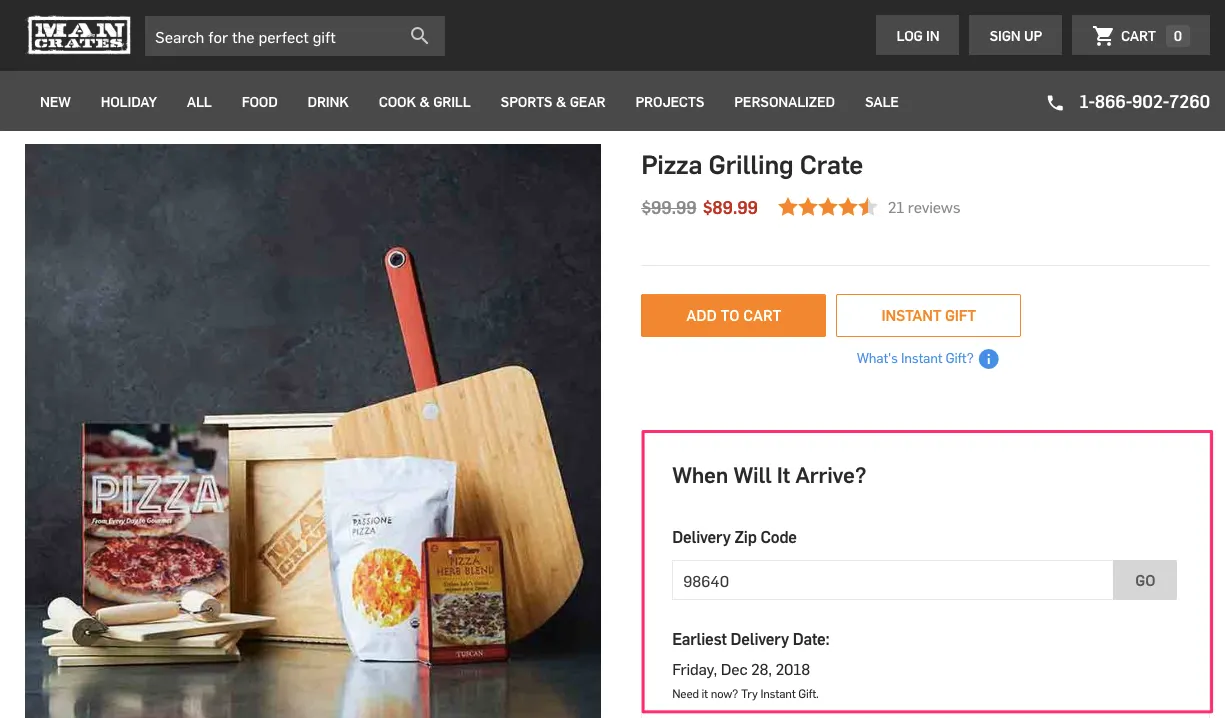
Apart from displaying the shipping time, you should know that people don’t want to wait longer for their products. So, you must provide faster shipping durations, but avoid over-promising with faster delivery as it may result in disappointment if you fail to deliver the product on the given day.
10. Create a sense of urgency
One of the effective strategies to boost the eCommerce conversion rate is by creating FOMO among visitors. By creating FOMO, you can create a sense of urgency, making customers feel that if they don’t purchase immediately, they may miss the opportunity.
The opportunity can be anything from buying the last available stock to getting free delivery if ordered within a limited time. Here are a few ways you can try to create a sense of urgency –
- Use a countdown timer to show limited-time offers
- Display stock limit alerts
- Offer flash sales and discounts for a limited time
- Offer limited-time checkout discounts
While using this strategy, make sure that you are not overdoing it. In many cases, we have observed that online stores display the FOMO elements on every product page, all the time.
Doing so results in losing the trust of your customers and thus the sales for your business. So, use this strategy carefully.
11. Provide Product Recommendations
Product recommendations are an effective way to boost conversion rates and increase the average order value. The best way to do it is by providing personalized recommendations while visitors are present on the website.
You can provide recommendations in the following ways –
- Display Recently Viewed Items
- Personalize Product Pages Based on Location
- Display Complementary products related to past purchases
- Display related products based on the shopping cart
By providing personalized recommendations based on the users’ past interactions, you can keep them engaged on your website for longer, leading to more sales.
12. Offer Free Shipping
Free shipping is the most lucrative offer you can give to online shoppers. So, why shouldn’t you use it to your advantage to boost the conversion rate?!
Here’s the thing, if people like your product and want to purchase it, they will pay anything for it. But sometimes they just don’t want to bear the additional shipping charges – they want you to deliver it for FREE.
Offering fast delivery comes at a cost – it reduces your profit margin or makes the product costlier. In that case, you can offer a quicker delivery option for which the customer should pay more. Otherwise, they can always opt for a free shipping option with a standard delivery time.
The idea is to offer both options – paid and free shipping. And let the customer decide if they want a slow but free shipping option or the paid ones for faster delivery.
13. Use Exit-intent Popups
Pop-ups are the best on-site marketing tool an online business can use to grab visitors’ attention. Exit-intent pop-ups are my favorite among all pop-ups because they give you the last opportunity to convert visitors into customers.
The best part is that by using exit-intent popup, you are not interfering with the user experience as it triggers only when the user shows an intention to leave the site.
You can use exit-intent popups to –
- Offer a discount on the shopping cart
- Limited-time checkout discounts
- Offer lead magnets
- Email newsletter subscription
Using Justuno, you can create unique popups with its drag-and-drop builder and deliver personalized popups by adding dynamic content blocks and defining triggers and actions.
Ecommerce email marketing software like Omnisend and Klaviyo also offer in-build forms and pop-up builders. If you are already using this software, it’s better to take advantage of its pop-up builder to increase the conversion rate for your online store.
- Further reading – How to use popups for eCommerce
14. Allow Social Sign up
Have you observed that customers are visiting your online store, adding products to their cart, but leaving the site right when you ask them to create an account or log in?
This is one of the common challenges among online store owners, and there are a few possible reasons behind it –
- Customers don’t want to go through long registration forms
- Customers hate when they have to leave the site for email verification
- Existing customers may have forgotten their passwords
So, what’s the solution? You can allow your customers to sign up using their existing social media accounts.
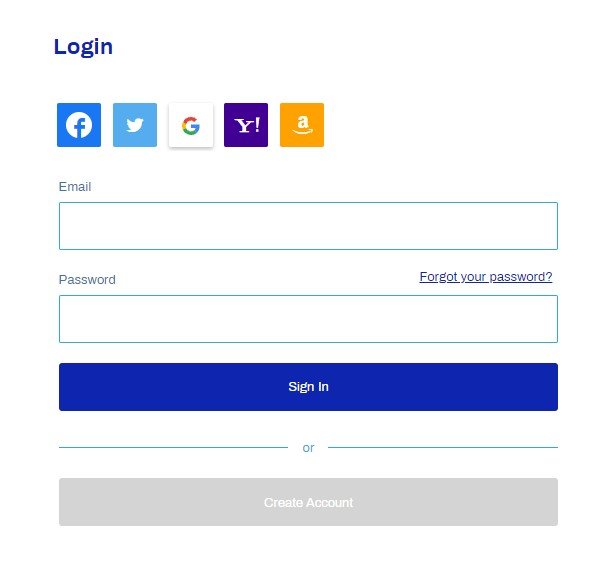
Shopify merchants can use apps like Growave to enable one-click social login in their store, and platforms like Wix, Squarespace, and BigCommerce provide in-build social login features.
15. Provide Excellent Customer Support
In eCommerce, people are more likely to buy from you if you have a responsive customer support system. It adds a trust factor to your store, ensuring customers that there’s a way to communicate with the brand if the product is broken, not delivered, or needs support with product usage.
There are different ways to offer customer support, and here are a few of our suggestions that you can consider –
- Add Live chat on your website. It is the most preferred medium by consumers for its fast and active responses.
- Use a chatbot to answer common questions such as, “Where’s my order?” and register complaints.
- Offer phone and email support for complex complaint cases.
You must accept that customers will have queries regarding your products and services, and you should be available there to resolve their issues or provide proper consultations.
Gorgias is one of the best eCommerce helpdesk software that allows you to chat live with customers on the website, register complaints, set up a chatbot, and more. You can read our detailed Gorgias review to know more about it.
- Further Reading – Best eCommerce customer service tools
16. Provide Multiple Payment Options
Failed transactions or unavailability of suitable payment options are the common reasons why potential customers drop off at the checkout page, thus the low conversion rate.
To overcome this, you should provide multiple payment options that your target consumers use. For instance, in India, UPI is the most popular payment method. If your potential consumers comprise Indian users, you should be providing a UPI payment method. Otherwise, you may see high checkout drop-offs.
Here are the popular payment options you should consider for your store –
- Credit/Debit card payments
- Internet banking
- Payment wallets
- UPI payments
- Buy Now Pay Later (BNYL)
- EMI payments
- Cryptocurrencies
It is unnecessary to provide all the payment options your payment gateway offers. But what’s important is not to miss your consumer’s preferences for online payments.
Further reading –
- Best Shopify payment gateway in the world
- Best eCommerce payment gateway in India
- Best cryptocurrency payment gateways
17. Reduce Distractions at Checkout
The checkout page is the final destination for consumers to place an order. So, at this point, you don’t want them to get distracted and leave the page without completing the checkout.
Here are a few tips to reduce distractions at the checkout page –
- Remove the website menu bar
- Remove the clickable website logo
- Use a short checkout form
- Don’t display other products
- Avoid surprising customers with additional charges.
Remember that the checkout page is designed for customers to complete the order by making the payment. So, you shouldn’t try to upsell or cross-sell at this stage – just let customers complete their purchasing journey.
- Further reading – Tips to optimize checkout page for more conversions
18. Let Customers Checkout as Guests
Sometimes people find a product in your store and just want to place an order. Going forward, they notice that they must create an account to complete the order.
At this point, some users might not want to go through the account creation process – filling up the form and verifying email and phone numbers. So, they just leave the checkout page without completing the order.
If you observe a high drop-off at the checkout page, this can be one of the possible reasons. And the best way to overcome this is by allowing customers to complete the order without creating an account.
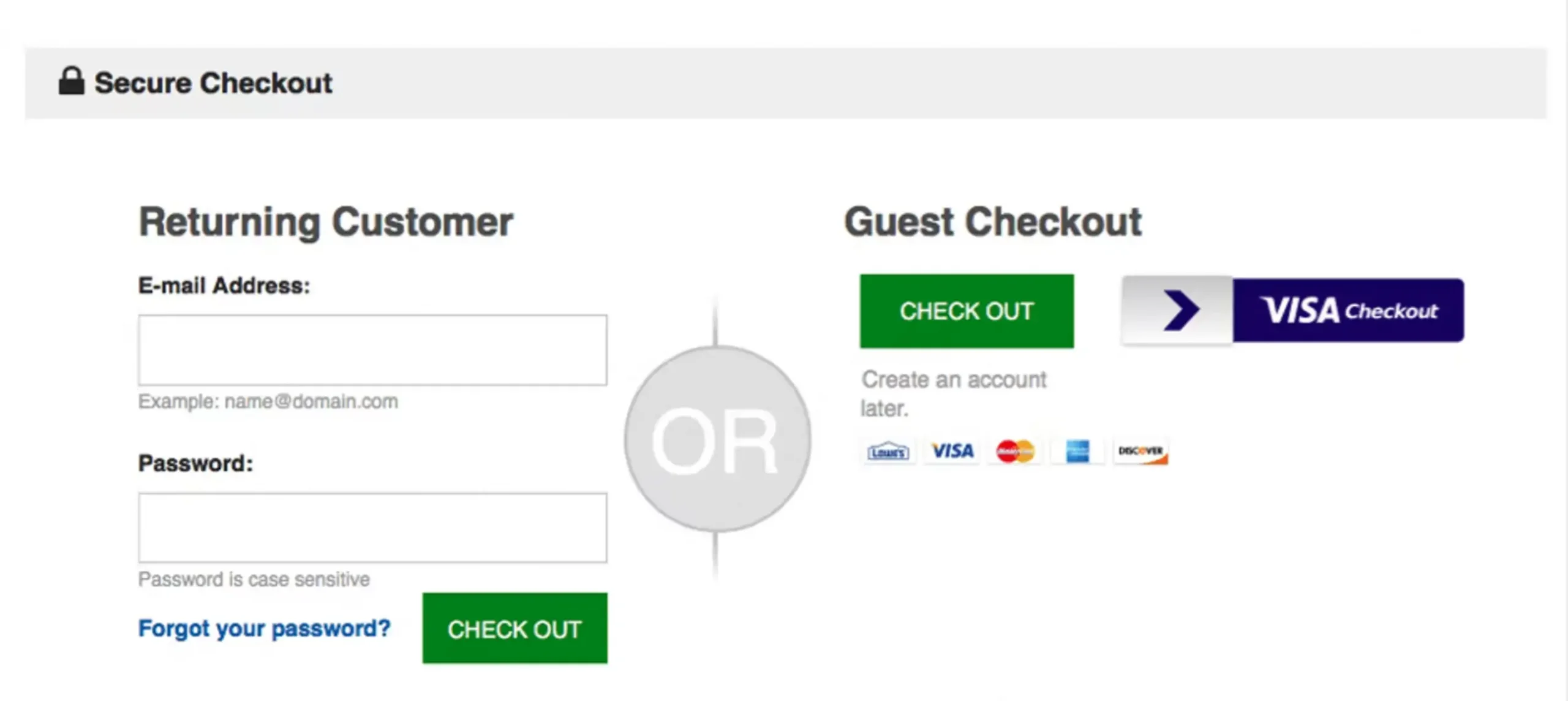
You can just ask for the email and phone number to send shipping updates and allow them to checkout as guests. This way, new customers can have a shopping experience with your store and might want to create an account on their second visit.
You can also offer an incentive such as loyalty points, free shipping, or discounts on the next purchase for creating their account.
19. Focus on Cart Abandonment Recovery
Cart abandonment is the biggest challenge for eCommerce brands – consumers visit your store, like the product, add it to the cart, and leave the site without completing the checkout process.
There can be many possible reasons people abandon their carts, but you can bring most of them back to the store by implementing an effective cart recovery strategy.
Here are a few strategies that you can try –
- Use marketing automation to send email and SMS reminders
- Offer limited-time discounts on the cart value
- Offer free shipping on a cart
- Send stock updates for cart products
Remember that the cart abandonment recovery strategy should be driven by a sense of scarcity and urgency. Customers should feel they may lose their favorite product if not purchased immediately.
20. Allow Back-in-stock Alerts Subscription
What would you do if customers found their desired product out-of-stock on your online store? Would you just ask them to visit another store?!
No, right?
Instead, you should ask them if you can notify them when the product will be back in stock. For this, you can add an opt-in form on the out-of-stock product pages where interested users can sign up for the alert.
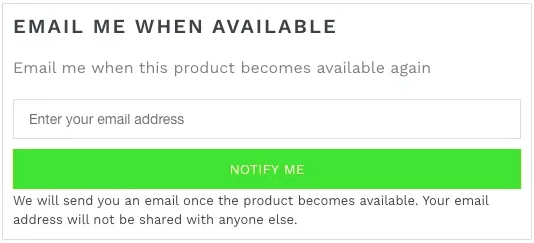
This way, you can bring such interested customers back to your store to sell the product. And the best part of this strategy is that you can also grow your email list.
21. Start an Educational Blog
A Blog is the best way to build authority in your market niche and establish credibility among your target audience.
With an informative blog, you can help your consumers with their problems, which shows that the brand knows about its products and cares for the customers.
This further helps you build trust among your consumers, ultimately inspiring them to buy and try your products.
Also, a blog can play a vital role in your conversion funnel to nurture the leads by providing them with relevant information at each funnel stage.
To learn more, you can read our guide on the best eCommerce blog topic ideas for inspiration to create your content strategy and drive targeted traffic to your site.
22. Offer Irresistible Lead Magnets
Blogging can be a great source of traffic for your website. Among those visitors, you will also have your potential customers. To convert such prospects into leads, you should offer them a lead magnet related to the blog topic.
These lead magnets can be –
- Ebook & guides
- On-demand webinar
- Newsletter subscription
- Free Consultation
Or anything that the reader might be interested in to find answers to their problems.
Using these lead magnets, you can build email lists of potential customers who can be added to the conversion funnel to nurture them into buying your products and services.
Best Ecommerce Conversion Rate Optimization Tools
By now you know some of the effective tips to optimize your site for higher conversion rates. Now, to implement these tips, here are a few tools you can consider using –
- Google Analytics – This is a free website analytics tool that you can use to analyze your visitors and the major traffic sources. You can also configure it to track enhanced eCommerce metrics like cart abandonment, revenue, etc.
- Hotjar – It provides a real-time view of how visitors interact on your website in the form of heat maps and screen recordings. Using heatmaps, you can visualize which part of the site users interact the most, and screen recordings show you how an individual user interacts with your website in a session.
- VWO – The best A/B testing tool that enables you to create different variations of your eCommerce website pages and provide detailed reports on their performance. It also provides a visual editor to create page variations without coding.
- Justuno – It is a powerful popup builder that lets you display personalized offers and promotional messages to visitors based on their behavior on your site. You can also create popups with customized product recommendations to boost conversions and generate more sales.
Depending on your business model and scale, you may require more tools, but these are the must-have for any eCommerce business for conversion rate optimization.
Ecommerce Conversion Rate Optimization FAQs
-
Why is Conversion Rate Optimization important for eCommerce?
As an eCommerce business, Conversion Rate Optimization is important for you because it helps you increase your overall business revenue by improving the percentage of website visitors who complete a desired action, such as making a purchase, creating an account, subscribing to an email list, etc.
-
What is a good eCommerce conversion rate?
A good ecommerce conversion rate can vary depending on the industry, product, and type of website. However, on average, a conversion rate of 2-3% is considered to be a good benchmark for an ecommerce website. This means that out of every 100 visitors to your website, 2-3 of them make a purchase.
However, it’s important to note that the best conversion rate for any eCommerce website is the one that is constantly improving over time through your conversion rate optimization efforts. So, make sure you follow the above CRO tactics.
Ready to Optimize Ecommerce Conversion Rate?
The success of your eCommerce business relies on how often you test and optimize the website for better user experience and higher conversion rates.
Remember that conversion optimization is not a one-time thing that you implement and leave it as it is for years. It is a continuous process and should be a priority for any eCommerce business.
Consumer behavior is changing continuously; rather faster than ever- what they like on your website and what encourages them to take action today might not be as effective in a couple of weeks.
In this guide, we showed you some of the effective eCommerce CRO tactics you can implement for your store. However, as mentioned earlier, you must collect data on how the changes are impacting your conversion rate and keep optimizing it for better results.
Looking for more guides to help you grow your eCommerce business? Here are a few hand-picked articles you may want to read next –



